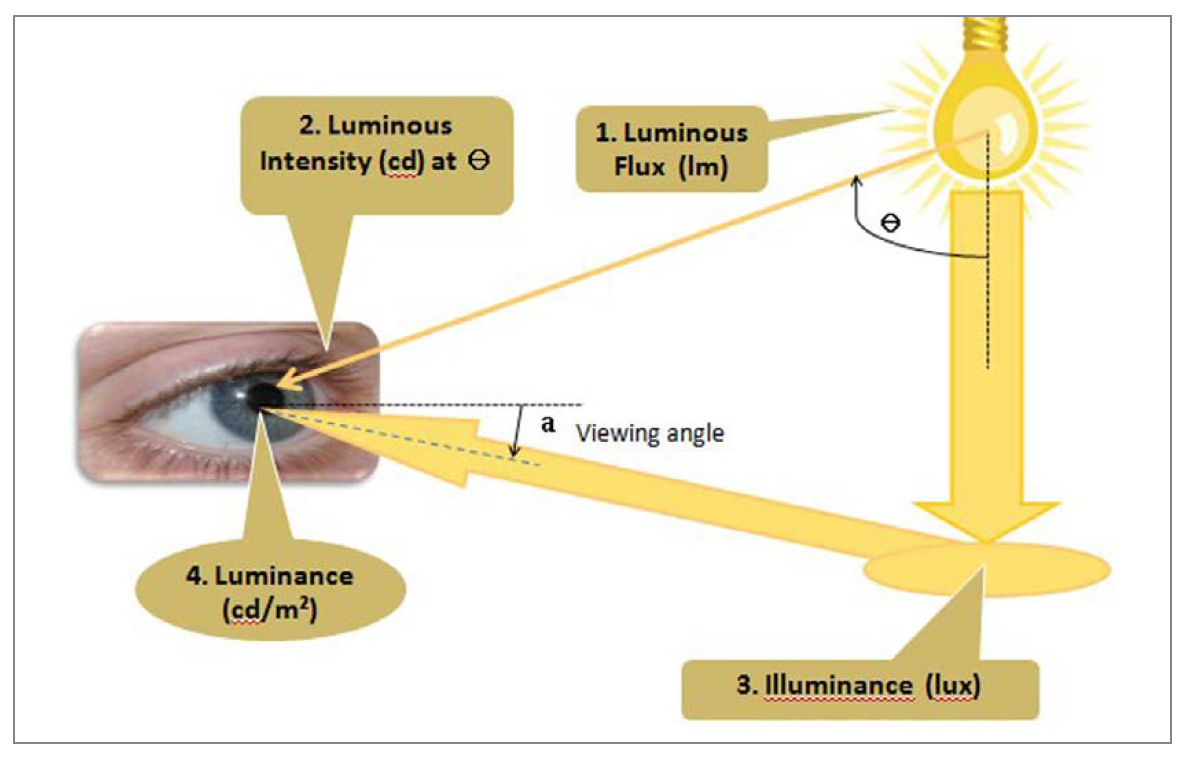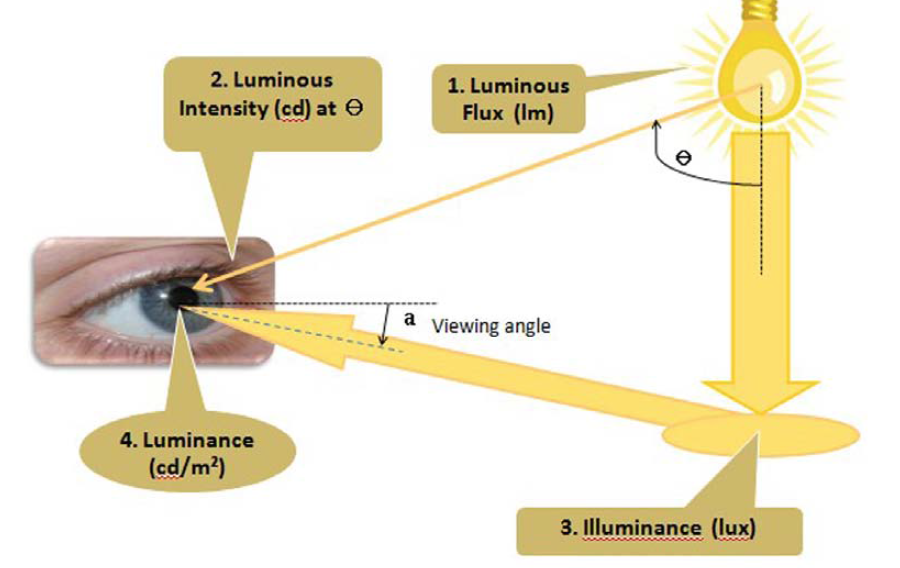Mesopic Photometry - An Accurate System of Road Lighting Evaluation by Surya Roshni Ltd.
For a long time, photopic vision was the basis for all light measurement tasks, but today this approach is challenged. According to several research results, it seems that mesopic vision should be used as a basis to evaluate street lighting applications or other low level lighting applications. Prija Jain from the Executive Design and Development (Photometry & Optics) department of Surya Roshni Ltd. in India gives us an overview on the recent status of the discussion, explains it and shows the resulting consequences.
Today, while facing an insuperable challenge to meet the present needs of energy and an apprehension of energy crisis and global pollution in the future as well as the continuous evolution of technology, the world is striving to find solutions to leverage the resources available.
The major part of total global energy demand calls for electricity, an inevitable need of human kind, which in turn is being consumed by the end users for several applications together with a significant amount used for lighting (the electric eyes).
Undoubtedly, LED is the latest technology to supplant conventional light sources with several merits such as Energy Efficiency. This results in a reduced carbon footprint, longer life and a product free of mercury. As a consequence, it retards the rate of global pollution and takes a step towards a “greener” world.
For the last couple of years, the lighting industry has been promoting the LED lighting system by replacing conventional luminaire systems while maintaining equivalent performance of conventional light sources. However, the question of whether the lighting industry really understands the methodology for finding out the performance “equivalent” and if implementation is the same, arises.
About Photometry
First and foremost we should take a look at the need of lighting metrology i.e. photometry. “The measurement of light”, although a very crude and non-technical definition, is a concept only known to a few people.
Precisely, photometry is the “measurement of light weighted by human eye response”.
It is a branch of radiometry which focuses on the measurement of light limited to the visible spectrum only, (approx. 380 nm-780 nm) instead of total optical radiation as in the case of radiometry.
There are four basic parameters involved in the metrology of the lighting system. - Figure 1 shows how these parameters are linked with the practical application. Figure 1: Photometric measurement parameters
Figure 1: Photometric measurement parameters
1. The Luminous flux is the integrated total light output (in visible spectrum) emanating from the light source and weighted by human eye response. The unit of measurement is lumen (lm)
2. Luminous Intensity is the quantity of luminous flux in a specified direction (θ in figure 1) per solid angle (steradian).
3. Illuminance determines the amount of light falling upon the surface and is measured in terms of lux (lm/m.) or foot-candle (lm/ft.).
4. The eye is able to detect the object after perceiving the light reflected from it which is defined in terms of the luminance, intensity per square meter of light travelling in the given direction (viewing angle) a (Figure 1) and measured in terms of cd/m..
Although limited bandwidth of visible spectrum, it is difficult to understand its measurement as it involves a complex factor: The “HUMAN EYE” for which we are making the light.
Human Eye Vision
When light enters the eye it first passes the cornea, and goes through a circular hole called the “pupil”, and is adjusted by the Iris diaphragm. The image is then focused on the retina with the help of the lens system. To a certain extent, this process resembles the way a camera works. However, the eye is an exquisite part of the human body and serves as a bridge between the brain and the visual world. It responds differently to varying light intensity conditions.
Within the eye, the surface of the retina is distributed with two types of photoreceptors (Figure 2), rod and cone cells. Up to 120 million numbers of rod cells are available in clusters and several rods are connected to the brain through a single fiber. This makes it difficult to transfer the information perceived by the individual rod cell and hence contributes only for motion and shape detection. The cones contribute to the perception of color since each cone cell is connected through a separate fiber to the brain.
 Figure 2: Human eye
Figure 2: Human eye
Six to seven million cone cells are subdivided into the three primary color receptors red, green, and blue.
As mentioned above, the resolution of rods is inferior due to the input being merged from several rods before they reach the eye nerve. The result is increased sensitivity, at a price of lowered resolution. Cones, on the other hand, send individual input to the eye nerve, maximizing resolution, while partly sacrificing sensitivity.
Retinal ganglion cells send the processed signal from the retina to the brain via the optic nerve. The optic nerves from both the eyes unite and form the so called Optic Chiasma. From there, the visual information travels through the optic tract to the knee - shaped lateral geniculate nuclei, where the signals are distributed via the thalamus to the two visual cortices. After undergoing processing in the primary visual cortex, the nerve signals are transmitted to the associative optical cortex where these signals are interpreted and finally, the conscious person perceives images of what they are looking at. (Figure 3)
 Figure 3: Visual pathway
Figure 3: Visual pathway
The Three Types of Vision
As photometric measurement is based on human eye response, the first and foremost prerequisite is to understand human eye behavior. A long journey of studies made on human eye vision found three different types of vision that the eye responds to:
• Scotopic Vision (very low or no light conditions approximately below 0.01 cd/m. luminance level),
• Mesopic Vision (low ambient light conditions, approximately between 0.01 cd/m. to 3 cd/m. luminance level),
• Photopic Vision (daylight or adequate ambient light conditions, approximately above 3 cd/m. luminance level).
The rods are incredibly efficient photoreceptors responsible for our dark adapted or scotopic vision also known as Peripheral vision of the human eye. More than one thousand times as sensitive as cones, they can reportedly be triggered by individual photons under optimal conditions. The optimum dark adapted vision is obtained only after a considerable period of darkness, say 30 minutes or longer, because the rod adaption process is much slower than that of cones. Under scotopic vision, say moonlight, our eye sensitivity peak occurs at 507 nm wavelength as per CIE luminous efficiency function i.e. V’ (λ). This wavelength belongs to a greenish-blue color, making blue more prominent to the eye under scotopic vision.
When there is enough ambient light available, our eye’s response jumps to photopic vision or Cone vision, also known as foveal vision (as cones are concentrated in the central foveal region on the retina), where the eye has sensitivity at 555 nm as per CIE Standard photopic luminous efficiency function i.e. V(λ), which belongs to a yellowish-green color.
There is a transitional state between scotopic and photopic vision called mesopic vision, like night time driving conditions, when both the rod and cone photoreceptors are partly active. The lower region of mesopic vision is dominated by rods whereas the upper region is dominated by cones.
The above thesis is sufficient enough to trigger the question- “which visual performance system (scotopic/ mesopic/photopic) should be preferred and when?”
Choosing the Right Vision Type
Basically, all photometric measurement systems employ photocell or photodiode calibrated for eye sensitivity functions obtained under photopic vision. These results have been directly applied in all types of lighting design calculations either internally or externally. Technically, though, they are not acceptable for applications involving low luminance levels falling in the region of mesopic vision, e.g. roadway lighting luminance calculations because under low light levels, the eye response is merely pertaining to mesopic vision. The yearning of all contenders of roadway lighting design calculations was fulfilled after the introduction of “CIE 191:2010 Recommended system for mesopic photometry based on visual performance”.
Initially, to analyze the mesopic visual performance, USP System (Rea et al: 2004) was introduced, then the second proposed photometry system was the MOVE system (Elholma et al.-2005 and Goodman et al.-2007), to overcome the shortcomings of both of these systems. The third Intermediate system MES1 and MES2 was developed and finally the MES2 photometry system has been adapted to analyze mesopic photometry depending upon technical comparisons made among all of the systems proposed.
The significance of mesopic photometry only accounts for luminance (cd/m.) calculations, keeping all other calculations unchanged.
Performance of LEDs and HPS Lamps under Mesopic Vision
For the mesopic photometric calculation, when HPS and LED streetlight installations were compared under the same installation conditions, the LED luminaire was found to be more effective for contributing better vision under night time driving conditions over the HPS luminaire.
Precisely, LED results in better visibility as compared to HPS under the same illumination level and less power consumption. In other words, “A low illumination level is required for LEDs as compared to HPS under the same visibility and comparatively low wattage”.
This is due to a broad white spectrum of LED over HPS which improves its S/P ratio more than one (e.g. 2.07 at 5500 K) against S/P ratio for HPS which is less than one (e.g. 0.40 at 2000 K).
The S/P ratio less than one has a negative adjustment for luminance calculation under mesopic vision, meaning that the given photopic luminance will be effectively reduced under mesopic conditions. Conversely, S/P ratios greater than one have positive adjustment factors, meaning that the given photopic luminance will be effectively increased.
Hence, photopic luminance measured under LED streetlight converted to mesopic luminance results in increased value. Conversely, mesopic luminance value is always less than its respective photopic luminance for an HPS based luminaire.
Conclusions
The measurement system that has been applied for so many years for the field measurement and lighting design simulation software in roadway lighting calculations or other similar low illumination lighting applications, is based on the photopic photometry which is now required to be superseded by a new recommended system based on mesopic photometry so as to stop underestimating the LED over HPS lighting systems.
In conclusion, the LED is a better lighting solution, not only in terms of power consumption but in visual perception as well. It accomplishes the ultimate goal of making light for eyes which calls for the prerequisite need of proper guidance and systems to influence lighting to improve the economy, efficiency and more importantly, safety on roadways.
References:
[1] CIE 191:2010 Recommended systems for Mesopic photometry based on visual performance.
[2] IESNA: Lighting handbook- Ninth Edition
[3] BIS (Bureau of Indian Standards)-National Lighting Code (SP 72: 2010).
[4] Introduction to Psychology v.1.0.12 by Charles Stangor

